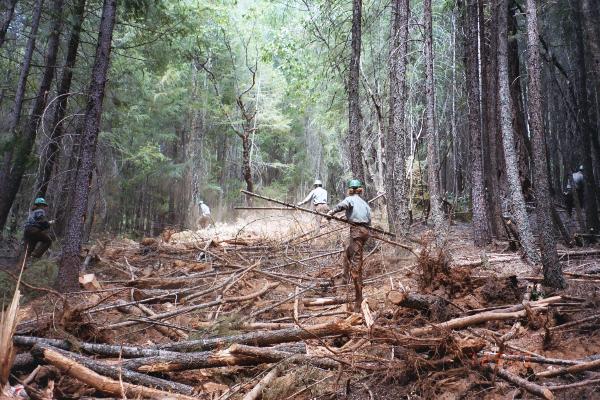 A study out of British Columbia, published in the Journal of Mammalogy, says that creating either large piles or windrows of coarse woody debris during timber harvesting helps forest-specialist small mammal species, such as the red-backed vole, stick around after a clear-cut.
A study out of British Columbia, published in the Journal of Mammalogy, says that creating either large piles or windrows of coarse woody debris during timber harvesting helps forest-specialist small mammal species, such as the red-backed vole, stick around after a clear-cut.
The study found that the piles or windrows of branches and twigs should be at least two meters (six feet) tall and five meters (25 feet) wide to be effective. The piles and windrows were more effective than scattering the branches and twigs evenly across the clear-cut space, the paper says.
Carnivores, such as coyotes, lynx and weasels, were also more likely to stick around in clear-cuts were woody debris had been placed in piles or windrows, the study found. The study also found that there were just as many small mammals in the clear-cuts as there were in the uncut forest. The difference was that in the clear-cuts there were many more generalist species, such as white-footed mice, while the forest specialists had disappeared.
The paper is open access, so read the whole thing in the Journal of Mammalogy, here.
Photo of woody debris or slash being used to stop sediment from flowing into a trout stream. By Jon Jue, courtesy of US Forest Service.
